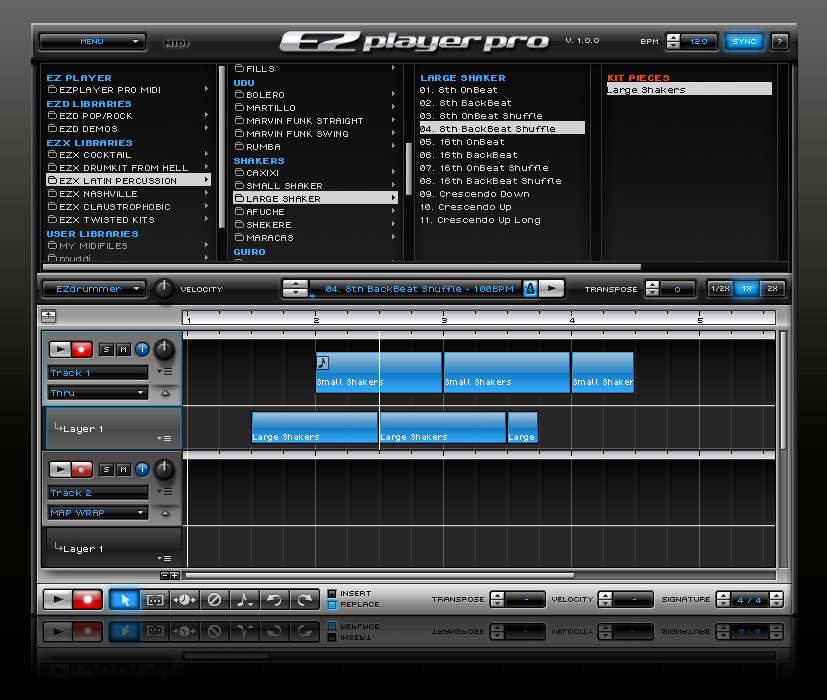
There are four loop layers, each loaded with a HUGE array of loops covering significant amount of genres. This lovely instrument circumvents the aforementioned typical shortcomings by putting the GUI real estate to maximally efficient use. Playback is MIDI-controlled (with latch options) so that’s all good. The interface is loud and clear with big enough buttons that live mouse clicking is not a nightmare. To be honest, the Samplelogic folks have outdone themselves. Let’s dive right into what Rhythmology presents the user upon start-up. The images below constitute a gallery of screenshots for Rythmology. The downloads, installations and activations followed the standard model for each platform, and I was up and running in a short while.
#Free groove monkey work in bfd eco windows 10
I used a HP Pavillion i5, 8G RAM, with Roland Tri-Capture running Windows 10 and Reaper 64 bit. Just to get some technical details out of the way. Here is where you can fine the details, with videos and demos, right from the horse’s mouth: With names like Rhythmology and BeatBox Anthology 2, the answer should be obvious.
#Free groove monkey work in bfd eco software
Fittingly, one of the software titles reviewed here excels at loop manipulation while the other excels at drum machine sounds and sampling. Loops and breaks need a whole other mentality and implementation as do synthesized solutions. But sadly with these you are stuck with drum-machine samples. allowed the above mentioned second and third basic elements, we could have all avoided buying additional software. If workhorses like EZD2, SSD4, SD3, AD2, etc.

“All-in-one” should cover the three basics : classic drum machine sounds (samples or emulated), synthesized sounds and loops/slicing. In this day and age, how spoilt for choice are you? One of the easiest ways you could do this is buy an all-in-one drum/beat-maker.
Imagine if you are a producer who primarily deals with live instruments and you want to add some electronic beat makers to your arsenal. And just to give you an idea of what can be built with it, some mad geniuses came up with a little thing called Falcon. Just like Kontakt, it allows the developer to build on that with whatever they want. More instruments for the other platforms will surely change this.ĭuring the course of the writing this review, it quickly became clear that, at least in the GUI size aspect, UVI got it right from the get-go: easily legible and bold text, with sharp graphics.

Grips notwithstanding, Kontakt remains THE software sampler, with a number of similar, and in some aspects, better, competitors (Independence, Halion, MOTU) bizarrely being ignored by the industry in favor of NI’s cash cow. It is, then, an absolute hats-off to developers like Sample Logic and Realitone in terms of making it much more appealing. I mean could it be any tinier? Why can’t it utilize the ample screen real estate that most modern producers have with multiple monitors, etc.? While I’m a person with good vision right now, I can only imagine the pain the interface must cause in others with weaker eyesight. The other drawback is the actual size of the existing GUI, text, graphics, etc. One drawback is the lack of accessibility through any kind of GUI elements for the more powerful sampler features, leaving the users of sample libraries severely limited by the options the developer makes available – not to mention it making developers work all that much harder.

This is rather surprising given the long road it has otherwise traveled in terms of new features. Boisterous beats and rabid rhythms: two new beat instruments show their respective sampling engines to great effect.ĭespite the prevalence of Kontakt as the sampler of choice these days, it has a couple of major drawbacks that haven’t been addressed to date.


 0 kommentar(er)
0 kommentar(er)
